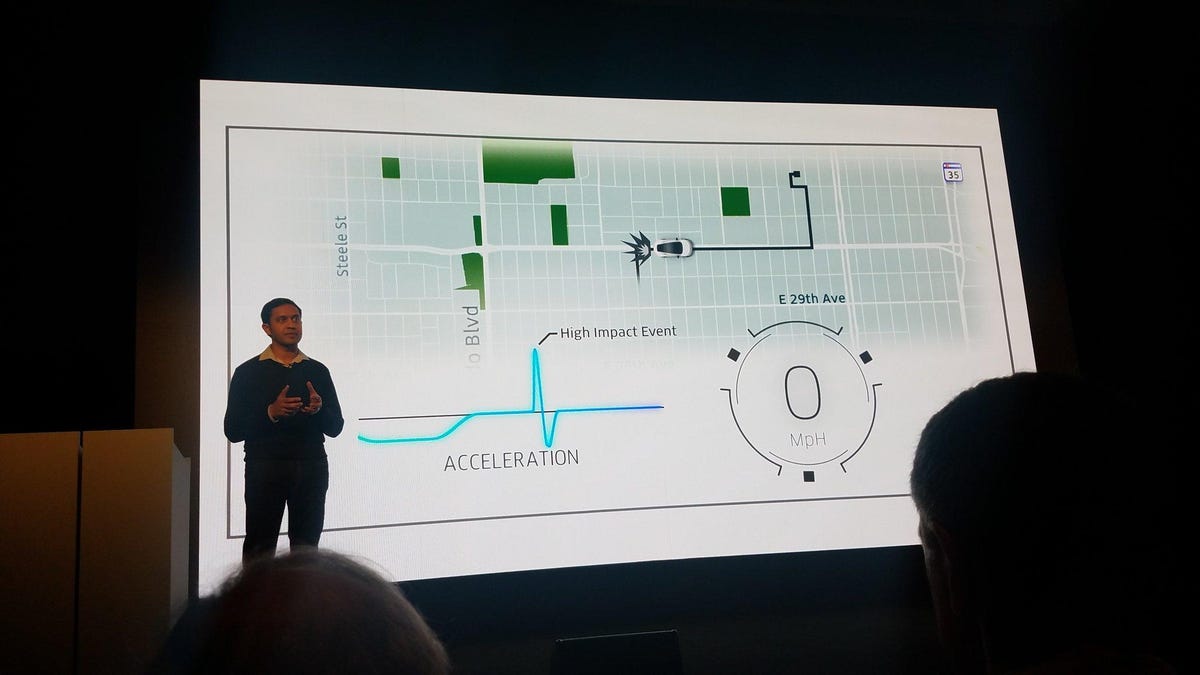Uber rolls out safety features, like AI that can detect crashes
The app's new tools will also stop letting drivers keep your exact address.

At a press event in New York Wednesday, Uber Director of Product Management Sachin Kansal explains how the new Automatic Crash Detection feature will work.
Uber on Wednesday introduced several new features that put safety in the front seat.
Among the tools announced at a New York press event was anonymization, which means drivers can no longer keep exact trip location information after dropping off riders.
The ride-hailing company also boasted new features using artificial intelligence and your driver's phone to tell if your car was in a crash. That new tool, called Ride Check, relies on the accelerometer and GPS in your driver's phone.
Safety is a consistent issue for Uber, both for drivers and passengers. A report in May claimed that at least 103 Uber drivers and 18 Lyft drivers sexually assaulted passengers. On the digital side, Uber drivers were victims of a phishing scam where thieves emptied their accounts through a sophisticated scheme. Getting into a car with a complete stranger -- while giving out your name and address -- is also a concern the company looks to fix.
Uber announced a pilot program for obscuring exact pick-up and drop-off locations in April. On Wednesday, it said it's launching the feature across its platform, starting with the US and moving to other countries in the coming months.
The changes come as Uber CEO Dara Khosrowshahi marks his one-year anniversary with Uber, taking over after troubles with the company's co-founder and prior CEO Travis Kalanick.
"We want Uber to be the safest transportation platform on the planet," Khosrowshahi said at the event Wednesday.
Uber now uses artificial intelligence to help figure out if a ride was involved in a car accident.
Uber is relying on AI to help with that shift. With its new Ride Check feature, Uber is constantly monitoring every ride; from when it starts to when it stops, the app is paying attention to what route the driver is taking, the ride's speed, and how long these rides are stopped for.
It's designed to pick up on abnormalities, like if a ride's stopped for too long. When something like that happens, an Uber representative sends a push notification to the driver to see if there's been an issue.
If the tool notices a jolt in speed while the car has stayed still, it signals to an Uber representative that there could have been a crash, Sachin Kansal, Uber's director of product management, explained.
"We can't prevent every rear-ender," Kansal said. "But what we can do is reach out to the rider and driver and make sure they have help if they need it."
Uber's new features also look to protect people's privacy and security online.
Instead of drivers seeing your exact location for pick-ups and drop-offs, now drivers only see the streets and get a general location on the map. The feature is designed to protect passengers, who can still see the addresses on their apps.
Before the change, drivers would have access to that information indefinitely, even if riders deleted the app.
"It is very important to make sure that the rider's specific pick-up and drop-off addresses are not available to the driver," Kansal said.
The company also introduced a new addition for its two-factor authentication. Before Wednesday's announcements, the only option for two-factor authentication was through SMS messages, which hackers have been able to crack in the past. Uber now allows for third-party authentication apps, like Duo or Google Authenticator.
"Please take care of your account, we are giving you the tools to do so," Kansal said.
'Hello, humans': Google's Duplex could make Assistant the most lifelike AI yet.
The Honeymoon is Over: Everything you need to know about why tech is under Washington's microscope.

